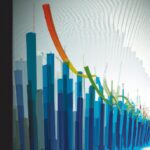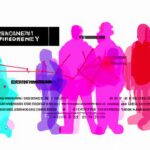The Theil index, in its social applications, helps measure inequality within a specific population. It considers both within-group inequality and between-group inequality. For example, in education, it can assess the distribution of educational resources across different demographic groups. This information helps policymakers identify areas that require intervention to ensure equal access and opportunity for all. Additionally, in health, the Theil index can analyze disparities in healthcare outcomes based on factors such as age, gender, or socioeconomic status. These insights guide the development of targeted programs and policies to address inequities and improve overall social well-being. Overall, the Theil index serves as a valuable tool in understanding and addressing societal inequalities.
Table of Contents
- Benefits of using Theil index in measuring social inequality
- Case studies illustrating the application of Theil index in social analysis
- Future
- Limitations of Theil index in understanding social inequality
- Strategies for incorporating Theil index into policy-making and decision-making processes
(Theil index)
The Theil index is a statistical measure that helps assess income inequality in societies. It provides valuable insights into the distribution of wealth and can be used to understand social dynamics and implications.
One key social application of the Theil index is its ability to identify areas or groups in society with high levels of income inequality. This information can then be used to develop targeted policies and interventions to address these disparities. For example, a government may use the Theil index to identify neighborhoods experiencing high levels of income inequality and invest in infrastructure and social programs to uplift those communities.
The Theil index can also be used to compare income inequality across different countries or regions. This allows policymakers and researchers to identify patterns and trends and learn from successful interventions in other contexts. The index can also be used to track changes in income inequality over time, helping to assess the effectiveness of policy interventions and economic development initiatives.
Furthermore, the Theil index can provide valuable insights into other forms of inequality beyond income, such as educational attainment or access to healthcare. By applying the index to these domains, policymakers can gain a more comprehensive understanding of social disparities and work towards more equitable outcomes.
In conclusion, the Theil index is a powerful tool for understanding and addressing income and social inequality. Its applications in identifying high-inequality areas, comparing inequality across regions, and tracking changes over time contribute to more targeted and effective policy interventions aimed at creating a fairer and more inclusive society.
Benefits of using Theil index in measuring social inequality
Theil index is a useful tool for measuring social inequality. It provides several benefits in this regard. First, the index allows for a comprehensive and accurate assessment of inequality within a given population. By taking into account both the distribution of income or wealth and the population’s size, it provides a more complete picture of inequality than other measures.
Using the Theil index in measuring social inequality also enables researchers and policymakers to identify the groups that are most affected by inequality. It can help pinpoint specific areas where intervention is needed to address disparities and promote social justice.
Another advantage of the Theil index is its ability to capture changes in inequality over time. By calculating the index for different years or periods, it becomes possible to track trends and assess the impact of policies or socioeconomic factors on inequality. This information is crucial for designing effective strategies to reduce inequality and improve social outcomes.
Furthermore, the Theil index is a widely accepted and recognized measure of inequality, making it easier to compare inequality levels between different countries or regions. This allows for international or cross-regional analyses and enables the sharing of best practices and lessons learned in addressing inequality.
The Theil index also has simplicity and clarity in its calculation, making it accessible to a wide range of users. Its straightforward formula and interpretation make it a valuable tool not only for researchers and policymakers but also for non-experts who are interested in understanding and advocating for social equality.
Lastly, the Theil index has the advantage of being sensitive to changes in inequality at different parts of the income or wealth distribution. This feature makes it particularly useful in capturing the relative deprivation experienced by the lowest-income or most marginalized groups in society.
In conclusion, the use of the Theil index in measuring social inequality offers several benefits. From providing a comprehensive assessment of inequality to identifying affected groups and tracking changes over time, the index serves as a valuable tool for understanding and addressing social disparities. Its simplicity and international recognition further enhance its utility. By harnessing the power of the Theil index, policymakers and advocates can work towards creating a more equitable society.
Case studies illustrating the application of Theil index in social analysis
Case studies provide valuable insights into the practical application of Theil index in social analysis. These real-world examples demonstrate how this statistical measure can be used to shed light on various social issues.
One case study involves analyzing income inequality in a specific region. By calculating Theil index for different income groups, researchers can identify areas where income disparities are particularly pronounced. This information helps policymakers and social planners understand the extent of inequality and develop targeted interventions to address it.
Another case study focuses on educational disparities among different demographic groups. The Theil index can be used to assess the distribution of educational attainment across various populations. By examining the index values, researchers can pinpoint groups that face significant disparities in terms of access to education and educational outcomes. This knowledge can guide efforts to ensure equality of educational opportunities.
The Theil index can also be applied to analyze patterns of residential segregation. By examining the distribution of different racial or ethnic groups within a city or neighborhood, researchers can quantify the level of segregation using the Theil index. This information is crucial for policymakers seeking to promote diversity and inclusivity in urban areas.
In healthcare, the Theil index can be used to assess the distribution of healthcare resources and services. By analyzing the index values for different geographical areas, researchers can identify regions where healthcare access is limited or unequally distributed. This knowledge can inform resource allocation decisions and interventions to improve healthcare equity.
Furthermore, the Theil index can be used to analyze gender disparities in various social domains. For example, it can be applied to examine gender gaps in workforce participation, wages, or political representation. By calculating the index for different genders, researchers can quantify the magnitude of these disparities and guide efforts to promote gender equality.
Overall, these case studies highlight the versatility and relevance of the Theil index in social analysis. By examining income inequality, educational disparities, residential segregation, healthcare access, and gender disparities, researchers can gain valuable insights into the social dynamics at play. The insights provided by the Theil index enable policymakers and social planners to identify areas of concern and develop targeted strategies to promote social equity.
Future
The future holds immense potential in the realm of social applications of Theil index. As societies strive for greater equality and fairness, the use of this index can play a crucial role in understanding and addressing various social issues.
One area where the Theil index can be applied is in analyzing income inequality. By measuring the distribution of income within a population, the index provides valuable insights into the gap between the rich and the poor. This information can help policymakers design targeted interventions to reduce inequality and promote social mobility.
In addition to income inequality, the Theil index can also be utilized to examine disparities in educational attainment. By assessing the distribution of educational outcomes, such as literacy rates and access to quality education, researchers can identify areas of improvement. This knowledge can guide educational policies and interventions to ensure equal opportunities for all individuals, regardless of their socioeconomic background.
Furthermore, the Theil index can shed light on gender disparities in various aspects of society. By examining the distribution of resources and opportunities between men and women, policymakers can formulate strategies to promote gender equality. This can lead to a more inclusive and equitable society, where individuals are valued based on their abilities rather than their gender.
Another important application of the Theil index in the future is its use in evaluating healthcare access and outcomes. By analyzing the distribution of healthcare resources and health outcomes across different population groups, policymakers can identify areas of inequity and work towards improving access to healthcare services for all. This can contribute to better health outcomes and a more equitable healthcare system.
As we look towards the future, it is essential to recognize the potential impact of the Theil index in shaping a fairer society. By utilizing this index in social applications, policymakers can make informed decisions and implement targeted interventions to reduce inequality and promote social justice. With a focus on inclusivity and equity, we can create a future where every individual has an equal opportunity to thrive and contribute to their fullest potential.
Limitations of Theil index in understanding social inequality
The Theil index is a commonly used measure to understand social inequality. However, it has certain limitations that need to be considered. One limitation is that it does not take into account individual circumstances or factors that contribute to inequality. It simply provides an overall measure of inequality within a society.
Another limitation of the Theil index is that it cannot capture the complexity of social dynamics. It is based on aggregated data and does not consider the relationships and interactions between different social groups. This means that it may not accurately reflect the true extent of inequality within a society.
Furthermore, the Theil index does not consider the multidimensional nature of social inequality. It only focuses on income inequality and does not take into account other important dimensions such as education, health, and social mobility. This limits its usefulness in understanding the full picture of social inequality.
In addition, the Theil index may not be suitable for comparing inequality across different countries or regions. It is highly influenced by the level of economic development and the distribution of resources within a specific context. Therefore, using the index to compare inequality between countries with different economic and social conditions may lead to misleading conclusions.
Moreover, the Theil index does not capture the subjective experience of inequality. It does not consider the perceptions and feelings of individuals who are affected by inequality. This can be important in understanding the social and emotional impact of inequality on people’s lives.
Finally, the Theil index does not provide any information about the causes and drivers of inequality. It is a descriptive measure that only reflects the current level of inequality without offering insights into the underlying factors that contribute to it.
In conclusion, while the Theil index serves as a useful tool to measure social inequality, it has limitations that need to be acknowledged. It does not consider individual circumstances, social dynamics, multidimensional nature, cross-country comparisons, subjective experience, or the causes of inequality. Therefore, it is important to complement the use of the Theil index with other measures and approaches to gain a more comprehensive understanding of social inequality.
Strategies for incorporating Theil index into policy-making and decision-making processes
Strategies for incorporating Theil index into policy-making and decision-making processes are crucial in ensuring effective and equitable resource allocation. The Theil index, a measure of income inequality, can provide valuable insights into the distribution of wealth and help policymakers design targeted interventions.
Firstly, policymakers should prioritize collecting accurate and up-to-date data on income distribution within various demographic groups. This data serves as a starting point for analysis and enables policymakers to identify areas of concern. By disaggregating data, policymakers can identify specific populations that are most affected by inequality, enabling them to develop targeted policies.
Secondly, policymakers should develop a comprehensive understanding of the factors contributing to income inequality. By conducting in-depth research and analysis, policymakers can uncover the root causes of inequality, such as disparities in education, access to healthcare, or gender gaps in employment. This knowledge allows policymakers to implement proactive measures that address the underlying causes of inequality.
Furthermore, policymakers should engage in inclusive and participatory decision-making processes that involve various stakeholders. By involving representatives from marginalized communities, policymakers are better equipped to identify potential blind spots and develop comprehensive solutions to address inequality. This approach ensures that policies are attuned to the diverse needs and experiences of different groups within society.
Moreover, policymakers should regularly monitor and evaluate the impact of their policies and interventions using the Theil index. By periodically assessing changes in income distribution, policymakers can determine the effectiveness of their strategies and make adjustments accordingly. This ongoing monitoring allows policymakers to remain responsive to emerging trends and adapt their approaches as needed.
Additionally, policymakers should collaborate with international organizations and experts in the field of income inequality. By sharing best practices and engaging in cross-border collaboration, policymakers can learn from the experiences of other countries and adopt effective strategies. This global exchange of knowledge and expertise can lead to more informed policy decisions and facilitate the implementation of evidence-based practices.
In conclusion, incorporating the Theil index into policy-making and decision-making processes is crucial for addressing income inequality. Strategies such as data collection, understanding root causes, inclusive decision-making, monitoring and evaluation, and international collaboration are essential for ensuring effective policy interventions. By adopting these strategies, policymakers can work towards a more equitable and inclusive society.
External Links
- Gini coefficient – Wikipedia
- Application of Gini, Theil and concentration indices for assessing …
- The Young Person’s Guide to the Theil Index: Suggesting Intuitive …
- 1 The Young Person’s Guide to the Theil Index: Suggesting Intuitive …
- Statistics Paper Series – Not all inequality measures were created …













